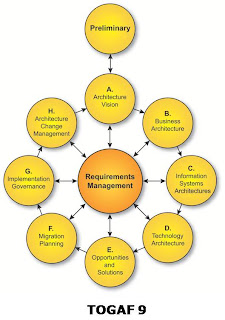Humility and the Art of Enterprise Architecture
As a lot, Enterprise Architects are not terribly humble people. We name frameworks after ourselves, and sometimes go to great lengths to correct the “misinterpretations” of others who describe our work in a way that we don’t agree with.
Yet, recognizing that the field is young requires that we should be willing to change as the field of EA changes; that we should be willing to look back on our models, developed in the past, and admit that we missed a few steps that we wouldn’t miss today.
I recently had the opportunity to discuss, on LinkedIn, a blog post that I made five years ago. I look back on that blog post and must admit that my opinions are a bit different now than they were five years ago. I still agree with my post, but I would certainly use different words today than I used in the past. I am more than willing to admit it.
I also look at the efforts of Alexander Osterwalder whose Business Model Canvas has proved both practical and flawed. He missed the fact that he needed to create a differentiation between the customer’s needs and the value proposition of the business offering to fill some of those needs. Did he go back and create an updated canvas? Nope. He created a new canvas to describe demand as though it fits with his older one (hint: it’s a mess).
The venerable John Zachman, probably one of the most humble men I’ve met, also made this same mistake. While his original model was only a couple of columns, and was updated only a few years later into the table we see today, the field of EA has changed. The table is no longer representative of companies with multiple business models (most of them) and the lack of a “customer” row simply relegates his “ontological table” to the dust bin.
Neither man will change. They have “legacy” models, with their names attached. To paraphrase Forrest Gump, humble is as humble does.
I would like to think that my willingness to upend my EBMM and replace it periodically with new versions shows my willingness to admit that (a) I’m often wrong, and (b) I’d rather learn than become stale. That said, I’m no paradigm of humility, myself.
After all, a truly humble EA would not have written this blog post.
(As my teenage daughter would say: Oh snap, you pwned yourself!)


